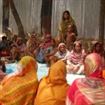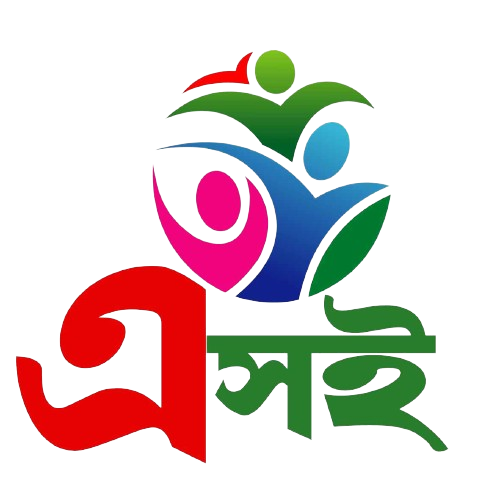
| Project |
WASH, Food Security and Nutrition Project |
| Started on (Date) |
December’16 |
| Phased out (Date) / Continuing |
April’17 |
| Funded by |
Unicef |
| Implementing Partner |
NGO Forum |
| Working area |
Islampur and Dewangonj in Jamalpur District |
| Objectives |
To support flood affected population having access to flood resilient WASH (Water, Sanitation & Hygiene) services and ensure improved access to nutritional services among children under age five and pregnant and lactating women (PLW).
|
| Key interventions |
- # Screening for malnutrition children among under five,
- # Screening 3000 PLW,
- # Cash transfer of Tk. 3,500 of admitted for SAM treatment,
- # Unconditional Cash Transfer Tk.1,500/family for 2000 Pregnant and Lactating Women,
- # IYCF session conducted,
- # Joint Field Vis,
- # Organized Cooking Demonstration,
- # emergency resilience improved latrines constructed,
- # 160 latrine for people with different needs (elderly, child and disable) constructed
|
| Result of intervention |
- # Improved nutritional status among children with Severe Acute Malnutrition (SAM) referral and treatment
- # Improved nutritional knowledge on Infant and Young Children Feeding (IYCF) practice among mothers
- # Safe water options ensured for most affected communitie
|
| Project outcome |
- # 37,500 people (7,500 HHs) in the most affected communities of Jamalpur have access to flood resilient WASH services
- # Improved nutritional status of under five children as well as pregnant and lactating women
|
Impressive photographs (Project Image):



| Project |
Assistance for Flood affected Women and Girls under Humanitarian Assistance |
| Started on (Date) |
November’16 |
| Phased out (Date) |
December’16 |
| Funded by |
UNFPA |
| Implementing Partner |
UNFPA |
| Working area |
Dewangonj |
| Objectives |
- To increase the access to multi-sectoral services for prevention of GBV and mitigation impact of GBV for the most vulnerable women and girls, to ensure their safety and dignity.
- To strengthen the coordination at the upazila (sub-national) level, including integrating GBV prevention and mitigation.
|
| Key interventions |
- # WFS established and functioning,
- # Community Watch Group Formation ,
- #Formation of Community Watch Group (CWG) ,
- # Community Watch Group (CWG) Orientation,
- # Dignity kits distribution,
|
|
|
| Project outcome |
- # 31 women and girls received one to one counseling,
- # 17 cases referred in the relevant service providers among 05 cases responded and solved.
- # 17 Group counseling session conducted with 274 participants on the issues of Pregnancy care and risk, risk on the disaster, violence against women and sickness.
|
Impressive photographs (Project Image):




| Project |
SHOUHARDO II Program |
| Started on (Date) |
1st faze 2006 -2010, 2nd faze 2011- 2015 |
| Phased out (Date) |
1st faze 2010, 2nd faze 2015 |
| Funded by |
USAID |
| Implementing Partner |
CARE Bangladesh |
| Working area |
Dewangonj, Islampur&Modergonj |
| Goal and Objectives |
Goal :Transform the lives of 370,000 Poor and Extreme Poor (PEP) households in 11 of the poorest and most marginalized districts in Bangladesh by reducing their vulnerability to food insecurity”.
Objectives:
- SO 1 – Livelihood: “Availability of” and “access to” nutritious foods enhanced and protected for 370,000 PEP households.
- SO 2 – Health, Hygiene and Nutrition: Improved health, hygiene and nutrition status of 281,000 children under 2 years of age.
- SO 3 – Empowerment: PEP women and adolescent girls empowered in their families, communities, and Union Parishad.
- SO 4 – Institutional Strengthening: Local elected bodies and government service providers’ responsiveness and accountability to the PEP increased.
- SO 5 – Disaster Management and Climate Change: Targeted community members and government institutions are better prepared for, mitigate, and respond to disasters and adapt to climate change.
|
| Key interventions |
- # Field crop production,
- # Comprehensive Homestead Development (CHD),
- # Fish Culture,
- # Income Generating Activities-IGA,
- # Vaccination Program,
- # Training on Capacity building of CHV,
- # Workshop with health & family planning department,
- # Mothers to mothers support group training,
- # World Health Day Observation,
- # Food/Ration distribution,
- #Youth Campaign,
- # Early Childhood Care and Development (ECCD),
- # CAP,
- # Leadership development training for VDC members,
- # UDCC meeting,
- #Open budget Meeting,
- # Training on Capacity building with UDV,
- # NFI distribution,
- # National Disaster Preparedness Day observation,
|
| Result of intervention |
- # Beneficiaries have been skilled about crop production and stories,
- # Women’s have been involved IGA
|
Impressive photographs (Project Image):

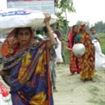
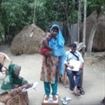

| Project |
Provision of Life Saving Child Protection & Emergency Education Services to the Flood Affected People
|
| Started on (Date) |
October’17 |
| Phased out (Date) |
December’17 |
| Funded by |
Unicef |
| Implementing Partner |
Unicef |
| Working area |
Islampur&Dewangonj |
| Goal and Objectives |
To recover access to child protection and emergency education services for 5000 most vulnerable children in the flood worst affected areas in Jamalpur |
| Key interventions |
- # CFS selection and Establishment support,
- # CFSs maintenance,
- # Engaging children in CFSs with psychosocial and development activities by Animators
- # Children Selection for Case management,
- # Message dissemination in the outreach/Community by volunteers,
- # Flow-up dropout children to school
|
| Result of intervention |
- 17128 children registered by CFSs. Out of children to the related center 4833
- 1183 courtyard meeting by volunteer Total participants 18107( Female -14117 and Male -3990)
- All teachers and local elite were played vital role to establish CFS in flood affected areas
- Good relationship with Educational department
- Many dropped out children are going to school regularly through volunteers.
- Guardians were cordial
- Children attendance at school increased
|
| Project output |
Output 1:5000 affected children have restored access to the child protection service
Output 2: Psychosocial care and support and strengthening family resilience extended through case management and referral to access to services
Output 3: 5000 children in the CFSs in the worst affected areas will receive education in emergencies kits to ensure continuity of education for children
|
Impressive photographs (Project Image):

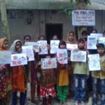
| Project |
Juvenile Justice Program(JJP) |
| Started on (Date) |
2002 |
| Phased out (Date) |
2013 |
| Funded by |
MnuserJonno Foundation (MJF) |
| Implementing Partner |
FIVBB |
| Working area |
All upozila in Jmalpur&Sherpurand Mymensing, Netrokona,.Kisorgonj, Tangail district |
| Goal and Objectives |
To strengthen children act and child protection through police department, local elite, NGO and with related administration . |
| Key interventions |
- # Mothers & Child group formation & meeting,
- # Task force meeting,
- # Meeting with DSS,
- # Training for risky children,
- # Life skill training,
- # Jail visit
|
| Result of intervention |
- # Children’s Have been skilled ,
- # Relationship have been increased children’s group leader & local administration and DSS,
- # Children’s involved with work after training.
|
| Project outcome |
- # no children in Jail,
- # Police department is positive roll play after arresting children
- # Children’s have been awarded about their rights
|
Impressive photographs (Project Image):



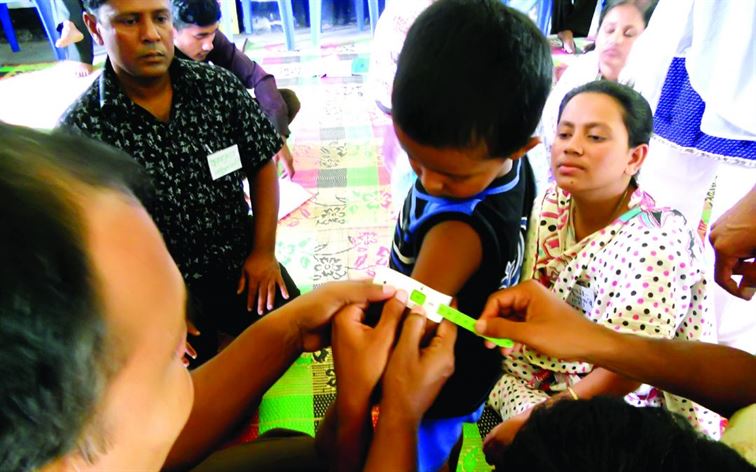
| Project |
Maternal Yang Child Nutrition Security Initiative (MYCNSI ) Project |
| Started on (Date) |
2012 |
| Phased out (Date) |
2013 |
| Funded by |
EU &Unicef |
| Implementing Partner |
Care Bangladesh |
| Working area |
Islampur and SarisabariUpozila in Jamalpur District |
| Objectives |
“Stunting among young children (0-36months) will be reduced by 5 percentage points, and anaemia in young children (0-23months) and pregnant women will be reduced by one-third.” |
| Key interventions
|
- 8 days residential ToT for 2 staff (FC and PM) on community focused approach counseling on maternal nutrition and IYCF, anaemia, CMAM, C-IMCI,
- 6 days residential training for 480 CHNVs on community focused approach counseling on maternal nutrition, IYCF, anaemia, CMAM and C-IMCI, # IYCF,
- Participation with IYCF Micro plan,
- 1 Day Training for CG Members,
- World Breastfeeding Week (WBW) observation,
- Folk Song,
- Day long Mother Support group Training,
- Seed & fencing/caring Support for Gardening (2 times,),
- Duck Support (10 Duck, Duck House/Feed),
- IGA Seed Money 6000/-
|
| Result of intervention |
- # Stunting and anaemia objectives reflected in US activities
- # Integrated IYCF action plans in place and endorsed by all stakeholders
- # Master trainers with skill to implement training
- # Supervisors capable of providing support
- # Workers/volunteers with skills to implement the package
- # Volunteers undergo 1 day/month refresher training
- # Peer support groups and household counseling active at community level
- # Sick children referred
- # Uncomplicated SAM cases treated at community
- # “Tippy-tap” set up in homes, community based institutions
- # EC material visible in community/household
- # Planned advocacy events attended by targeted stakeholders
|
| Project outcome |
- # Homestead Gardening,
- # The selected beneficiary interested on livelihood activities.
- # They are fond of also the training on business plan, IGA,
- # Skills Development training changed the mothers empowered with financial sustainability.,
- # Positive the IYCF and hygiene practice.
|
Impressive photographs (Project Image):
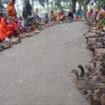
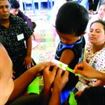


| Project |
Ending Child Marriage |
| Started on (Date) |
March’2014 |
| Phased out (Date) |
Aprtil’2015 |
| Funded by |
Unicef |
| Implementing Partner |
Unicef Bangladesh |
| Working area |
Jamalpur Sador & Sarisabari -Upozilla in Jamalpur District. |
| Goal and Objectives |
to end the child marriage from Jamalpur Sadar and Sarishabari Upazila |
| Key interventions |
- Training for UF & CHV,
- Two days orientation for WDC,
- Micro Plan and Social Map prepare,
- Collection Adolescent list and sent to DC, SP
|
| Result of intervention |
- Collected 10-19 years old adolescents list ,
- Reduced early marriage,
- UP chairman, Member don’t give illegal birth certificate.
- Without birth certificate is not marriage register.
|
| Project outcome |
- Developeda database of 47500 adolescents (10-19 ) years old,
- Completed 100 micro plans at ward level for ending child marriage,
- prepared social map,
- Developed yearly Action plan for ending child marriage each ward.
|
Impressive photographs (Project Image):


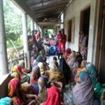

| Project |
Maternal, Neonatal and Child Survival (MNCS) Interventions |
| Started on (Date) |
2008 |
| Phased out (Date) |
2012 |
| Funded by |
AusAID |
| Implementing Partner |
Unicef Bangladesh |
| Working area |
Sherpur District |
| Goal and Objectives |
“To reduce maternal-neonatal and under-five child mortality” |
| Key interventions |
- Household visit,
- Pregnant Mother visit,
- Local Level Planning and Coordination (LLP,
- Micro plan development for MNCSWC, Union &Upazilla level,
- Basic training on ENC & PNC Package for MNCSP,
- 1 day orientation for Opinion leaders,
- Basic ANC training for paramedics/staffs,
- Monthly Co-ordination meeting with CS, DDCC, UDCC,
|
| Result of intervention |
- Children protected by valid immunization
- Care givers practiced a set of essential child care behaviors
- Under-five children with pneumonia, malaria and neonatal sepsis will receive appropriate treatment
- Children protected from micronutrient deficiency by vitamin A supplements, deworming tablet and iodized salt.
|
| Project outcome |
- Having knowledge and skilled MNCS staffs & Promoters,
- Active CCMG& MNCSWC.
- Close coordination among GoB, NGOs and other stakeholders.
- Improved status of Local Govt. involvement and coordination.
- Government initiatives for functioning community Clinics.
|
Impressive photographs (Project Image):

